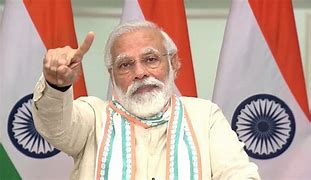World
Terrorist with Pakistan link attacks US university
New York : A young terrorist with Pakistan links launched an attack at a US university using his car and a butcher’s knife injuring 11 people before being shot dead by a police officer.The attack was carried out at the Ohio State University in Columbus by Abdul Razak Ali Artan.
Artan had spent seven years in Pakistan after leaving his native Somalia before coming to the US as a refugee two years ago.The attack turns a spotlight on Republican President-elect Donald Trump’s calls during his campaign for a temporary halt to Muslim immigration while screening procedures are tightened.Trump has since softened his stand, leaning towards heightened vigilance towards those coming from some countries linked to terrorism.
While national leaders were reluctant to even call the incident terrorism, a Republican Indian American Ohio lawmaker, Niraj Antani, jumped into the fray with a challenge.Democrats see such acts as a result of the proliferation of weapons rather than the motivations.
In line with this Tim Kaine, who was the Democratic Party’s candidate for vice president, reacting to first reports of the shooting, tweeted that he was “deeply saddened by the senseless act of gun violence.”State Representative Antani, who at 25 years is among the youngest elected officials in the US, tweeted back at Kaine, “But not saddened by the senseless act of machete or car violence?” The tweet was later removed.
Columbus Police Chief Kim Jacobs told reporters that “we have to consider that it is” a terror attack.Artan, whose age was reported to be between 18 and 20, was a third year transfer student in logistics management.After leaving Somalia in 2007, he lived in Pakistan till 2014 before he came to the US. According media reports, Catholic Charities had helped with his family’s resettlement.Officials said that after a university building was evacuated on Monday morning because of reports of a gas leak, Artan drove a car into the crowd of people standing outside, charged out of his car wielding a knife and attacked.A police officer who was nearby reached the scene of the terror strike and shot Artan dead, officials said.
Officials did not release the names of the injured, who have all survived. One of them was a faculty member and most of the others were students, according to the Columbus Dispatch.Al Qaeda and the Islamic State (IS) have called upon their supporters to carry out attacks by driving vehicles into people or using knives, tactics that do not require elaborate preparation or equipment or networks.
However, these can be potent weapons for sowing fear among the public.In an interview with him published in the student newspaper, The Lantern, Artan had said, “I am a Muslim, it’s not what the media portrays me to be.” He went on to blame the media for creating a picture of Muslims that would make people “feel uncomfortable” to see him praying in public.But NBC news said that in a Facebook post attributed to him he wrote that he had reached a “boiling point” and added, “America! Stop interfering with other countries, especially Muslim Ummah [community]. We are not weak. We are not weak, remember that.”
World
Lockdowns in China Force Urban Communities to Defy Censorship and Vent Frustration Online

Shanghai’s rich middle class is leading a wave of online dissent over the strict and prolonged lockdowns imposed in various parts of the country. Chinese internet censorship is struggling as patience is wearing thin in many urban centers, coming up with creative forms of online protests.
Social Media Posts Revealing Lockdown Tension in Shanghai
Drawn-out lockdowns are nothing new in China as authorities insist with the nation’s zero-Covid policy since the start of the pandemic. Currently over This time around, however, metropolitan areas like Shanghai are increasingly difficult to keep quiet, given that its more than 25 million residents have seen weeks of total isolation along with food shortages and many other service interruptions.
Dozens of towns and reportedly over 300 million Chinese citizens have been affected by lockdowns of different severity. As expected, urban netizens have been most outspoken over their difficulties by finding creative ways to get around state censorship and bans placed on topics, news comments and spontaneous campaigns.
Shanghai residents have been using mobile proxies and hijacking seemingly unrelated hashtags to talk about healthcare issues, delivery failures and the overall severity of their situation. The “positive energy” that the Chinese government wants to transmit during the recent prolonged series of lockdowns does not come naturally to those counting food supplies and online censors are working hard to filter words, trending topics and undesired social media sharing.
WeChat groups and message threads are under constant monitoring. Posts questioning the zero-Covid approach have been quickly deleted, including by leading Chinese health experts like Dr. Zhong Nanshan. Video footage is soon censored and protests and investigations are quickly made to disappear.
Where this has not worked, officials have exposed banners with warnings and outright threats like “watch your own mouth or face punishment”, while drones have been patrolling the city skies. Yet, if anything, this has led to further tensions and unspoken confrontation with Shanghai’s educated and affluent middle class.
Creative Online Solutions Harnessing Civic Energy
Announcements by Chinese social media that they would be publishing the IP addresses of users who “spread rumors” have not helped either. Tech industry research has shown that much of Asia’s tech-savvy population has a habit of using mobile proxies and other privacy tools, quickly finding workarounds to browse the internet freely and talk to the world about the hottest topics.
The sheer volume of forbidden posts is already a challenge for the very censorship system, experts explain. Unable to track all trending hashtags, state workers overlook topics that speak about the US, Ukraine or other popular news. Linking human rights elsewhere to their situation, Chinese online dissidents establish their informal channels and “hijack” the conversation to share personal or publicly relevant information about the Covid suppression in their town.
Sarcastic and satirical posts still dominate. Others hope to evade the censors by replacing words from famous poems or the national anthem. One thing is certain – social media, when harnessed with the right creativity, has proven its ability to mount pressure on the government in even some of the most strictly controlled tech environments like China.
























